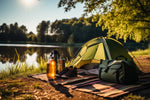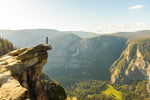Walter Hix
How to find food and water in the desert?
A Desert is a place that receives low precipitation, i.e., less than 10 inches per year. Therefore, a desert environment is dry and hot throughout the day and get cold at night. Water and food are the most important things you need to survive in the desert. Hot and dry temperatures here can dehydrate you quicker than you think.
Also, the unavailability of food can drain your energy, especially if you can’t get out of physical exertion and the Sun.
Best ways to source food in the desert
Do you want to know some of the best ways to source food in the desert? Here we have listed some of the most effective options you must consider in this regard.
So, here we go:
Search for cactus
Cactus is one of the most common food sources in the desert. While there are a few plants that can be found in the desert, Cacti are the most abundant. If you are in a desert that has cactus, fruits grown on cacti would be your best bet to stay fueled. Almost all cacti fruits are consumable. Most of these fruits have a great taste that can be an additional benefit for you. So, whenever you find cactus, take as many cacti fruits as possible to feed yourself later. Be careful when choosing your cactus, as some are poisonous plants. There are around 7 poisonous cacti, so do your research prior to any desert excursion.
Find the homes of insects and reptiles.
Most commonly, the homes of reptiles and insects are in the form of mounds and holes underneath the dirt. You can lure out these food sources with a small twig only. However, it is highly important to be careful while practicing this. It is because most of the time, you don’t know what is inside the hole. In regards to insects, they can be eaten raw much of the time, so they are quick and easy sustenance.
If you have caught a lizard, the tail of the lizard is not only high in protein but also the best-tasting part of its body. So, consume accordingly.
Important tip:
You must be very careful when poking an insect or reptile to get out of the hole. Always manage to maintain a distance from the hole. Avoid going too far because then you won’t be able to hostile the reptile or insect, and it will go away.
Set traps for animal hunting
To hunt animals in the desert actively is an act that requires patience and energy. Therefore, you should prefer setting a trap to catch the animals here. A lay-down trap to catch the animal and dig the hole there to give them a way to enter your trap. You can place a piece of small cactus fruit as bait here.
Important Warning!
Avoid eating anything if you don’t have water with you. Our bodies need water to complete the food digestion process. Also, prefer properly cooked meat to stay healthy in this trying environment.
Common edible greens you can find in the desert.
Here are some of the most common edible plants and trees that you can find in the arid climates of a desert. Looking for these can provide you with an efficient source of food to fuel your body. You can even carry as many of these as possible to have a sufficient food stock for some time.
So, let’s have a look at the key options below to know in this regard:
· Mesquite
These trees are available in a wide variety. For example, Mesquite in Arizona isn't taller than you those can find in Texas. Regardless of this, all mesquite produces the same beans. Some of these beans may have a slight difference in looks from others. The best thing here is that all mesquite beans are edible.
· Cholla
Cholla is also a type of cactus that’s available in different varieties. All varieties of Cholla produce edible fruit and pods.
· Yucca
This is an incredibly powerful plant you can find in the desert. It is a bountiful plant. You can eat its flowers raw, roast its fruit to eat and use its roots in soap.
· Beautyberry
Here is another most common plant to find abundant in the desert. Be careful while consuming this because it may upset some people's stomachs. Always try a little bit before consuming more.
How to find water in the desert?
Here are some of the most effective ways to find water in the desert you must know. So, here we go:
Follow wildlife
A group of wildlife always means the nearby presence of water. So, be careful and look for wildlife signs to find water.
For instance:
- Listen to birds and watch for circling birds in the sky.
- Have you encountered swarms of mosquitoes and flies? You can find a water source nearby.
- Bees generally fly in straight lines between the hive and water sources. So, look for them.
- Look for animal trails or tracks leading downhill to find a water source.
All these are some of the most effective options for finding a nearby water source.
Look for dense vegetation.
Most trees and dense vegetation can’t survive without water. If you don't know about the local vegetation of the desert, simply find the green plants around. Wide-leaf and deciduous are important signs as these require more water to grow. So, wherever you see such plants and dense vegetation, rest assured. You will get a water source nearby.
Search for canyons and valleys
Canyons and valleys are your best bets to find water in the desert. These generally stay shaded during hot afternoons. You can locate these easily using a topographical map. If you don’t have one, search these in your surrounding landscape. These cooler canyons are more likely to retain snowballs and rainfall.
Find river beds and dry streams.
Sometimes, the desert has water under the surface to find. The best place to find a water source is a river's bend. The water flow erodes in this area more often, creating a depression to catch water’s last dregs.
Slow your water loss rate
More sun exposure and exercise can speed up water loss from your body and lead to dehydration. Act smart while searching for water and prefer spending the hottest part of a day in a shady place.
Final Thoughts
Regardless of the reason why you're in the desert, it is important to scavenge food and water around you in the desert. The simple yet actionable guide we have given above will help you in this process. It is always important to avoid moving during the hottest time of the day to avoid energy drain and dehydration. So, be careful and plan your search strategy accordingly.
Share on:









